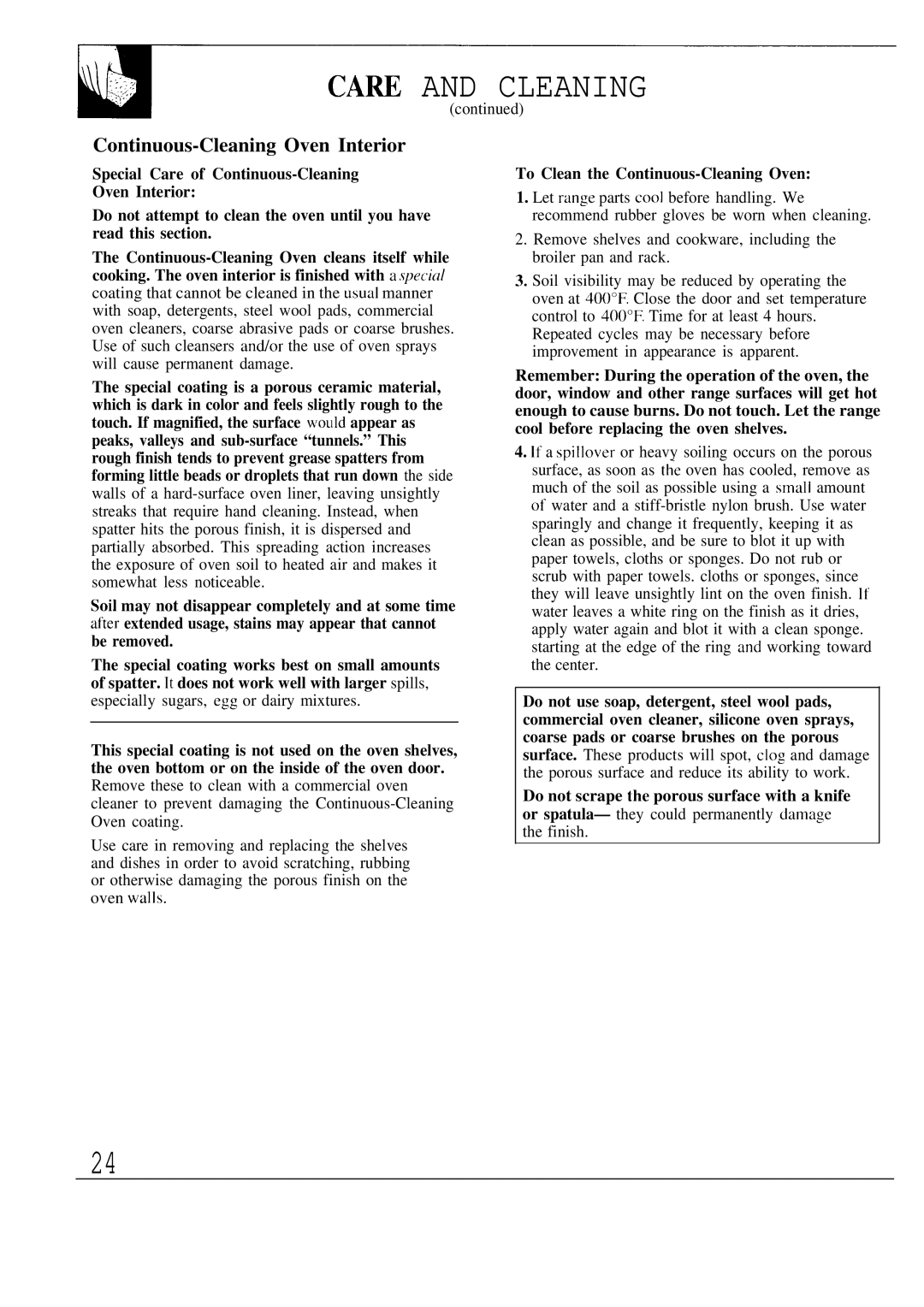
CAm AND CLEANING
(continued)
Continuous-Cleaning Oven Interior
Special Care of
Oven Interior:
Do not attempt to clean the oven until you have read this section.
The
The special coating is a porous ceramic material, which is dark in color and feels slightly rough to the touch. If magnified, the surface would appear as peaks, valleys and
Soil may not disappear completely and at some time af’ter extended usage, stains may appear that cannot be removed.
The special coating works best on small amounts of spatter. It does not work well with larger spills, especially sugars, egg or dairy mixtures.
This special coating is not used on the oven shelves, the oven bottom or on the inside of the oven door. Remove these to clean with a commercial oven cleaner to prevent damaging the
Use care in removing and replacing the shelves and dishes in order to avoid scratching, rubbing or otherwise damaging the porous finish on the oven walls.
To Clean the Continuous-Cleaning Oven:
1.Let range parts cool before handling. We recommend rubber gloves be worn when cleaning.
2.Remove shelves and cookware, including the broiler pan and rack.
3.Soil visibility may be reduced by operating the oven at 4000F. Close the door and set temperature control to 4000F. Time for at least 4 hours. Repeated cycles may be necessary before improvement in appearance is apparent.
Remember: During the operation of the oven, the door, window and other range surfaces will get hot enough to cause burns. Do not touch. Let the range cool before replacing the oven shelves.
4.If a spil]over or heavy soiling occurs on the porous surface, as soon as
Do not use soap, detergent, steel wool pads, commercial oven cleaner, silicone oven sprays, coarse pads or coarse brushes on the porous surface. These products will spot, ctog and damage the porous surface and reduce its ability to work.
Do not scrape the porous surface with a knife or spatula— they could permanently damage the finish.
24
